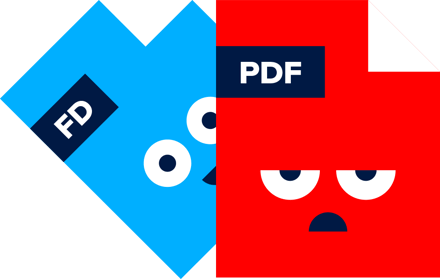Want to know how big companies like HubSpot, Semrush, and Salesforce consistently publish high-quality content so often? While many talented people are involved, content creation at scale requires more than talent. It requires top-notch organization, which helps marketers prep everything about the creative publishing process.
This article will explain how you can stay on top of every piece of content from start to end.
Building your content calendar
Organization is paramount to a good content strategy. To be successful, you need to be able to see the big picture in terms of which content assets you've already created, which are upcoming, and what you're planning for the future. As we already discussed, part of this means determining which content assets align with the stages of the buyer's journey. In addition, creating a timeline is an essential organizational tool.
Creating a content calendar gives you oversight that lets you manage your time and expectations. It gives the flexibility to add or remove content assets in whatever way best supports your overall business goals.
However, if you've previously sat down and tried to plot out a content calendar, you probably know that it can be a confusing and challenging process. This section aims to give you the tools you need to make this process painless and productive, including an excel template for your content calendar.
Setting up your spreadsheet
We'll discuss what to consider when placing your content pieces into your calendar shortly. First, let's address how to set up the spreadsheet that will contain all your information.
The calendar we use at Foleon has several columns, giving us oversight into everything we need to know about each piece of content.
The columns indicate:
- Is the content currently in progress?
- What is the estimated deadline?
- What is the status of the project?
- Who is the project owner?
- What is the type of content?
- Is the content part of a campaign?
- What is the title?
- What is the business goal for your content?
- Which stage of the buyer's journey are you targeting?
- Which persona are you targeting?
The business goal column we use dovetails the buyer's journey stage. It defines what reaction we hope to achieve from whoever views this content.
Starting to fill in your calendar
When you begin filling in your spreadsheet with your planned content assets, prioritization and time management are your top concerns.
Since content marketing is an ongoing effort and not a one-off project, you'll want to make sure that you set reasonable expectations about concurrent projects.
Working on too many large pieces at once is a surefire way to miss your deadlines. This is an intuitive bit of knowledge, but it's hard to act on without the organization provided by your content calendar.
When filling in your calendar, make sure that you have larger projects spread out and only have smaller projects running concurrently. Luckily, it's fairly easy to pinpoint which projects will be more time and labor-intensive. This usually correlates with word count and necessary research.
Organizing around campaigns
Since you will generally have one large project and a few smaller ones running at once, it is good to have them all be around related topics. This way, you'll naturally see your marketing campaigns start to form. Each campaign can have a big content piece, the real workhorse, supported by your shorter pieces.
You can also work backward with the idea for a campaign and the expected timeline. From there, you can define the larger and smaller content projects that will fit into that campaign.
Every campaign should relate to an overarching business goal, with its metrics for success. It should target one or a group of the buyer's journey stages and personas. Moreover, every piece of content within a campaign should have those same attributes.
That's a lot of information for every piece of content. Many marketers cut corners because it's too difficult to keep track of everything. But why do a worse job with content marketing when you can use a content calendar as a tool to stay organized and easily track everything you need to track?
The slow build of content marketing
Have you ever watched a classic horror movie, like Alfred Hitchcock's Psycho? Many of those movies are what fans refer to as "slow burn" horror movies. They don't hit you over the head all at once. Instead, the dread builds over time, and the movie's accomplishment is the feeling you're left with by the end.
Content marketing is kind of like a slow-burn horror movie. Rarely will a company have one piece that immediately goes viral and accomplishes all their business goals at once. If they have a piece that gets that kind of attention early on, they likely don't have the infrastructure to fully capitalize on the success.
Content marketing is often a series of smaller creative and outreach efforts that assemble many small building blocks of success.
Establishing quantitative goals ahead of time, and frequently revisiting and re-assessing them, is how you ensure that you are continuously building the necessary structure for your desired results. Otherwise, you risk wasting time and effort.
Developing and tracking your calendar
Remember that content marketing is a long game. Your content calendar lets you visualize how your content efforts build over time and establish milestones that coincide with content events. Without your calendar, this kind of structure would be impossible to develop and track properly.
As you track your progress, don't treat your calendar as if it's set in stone. You can always adjust it as needed.



